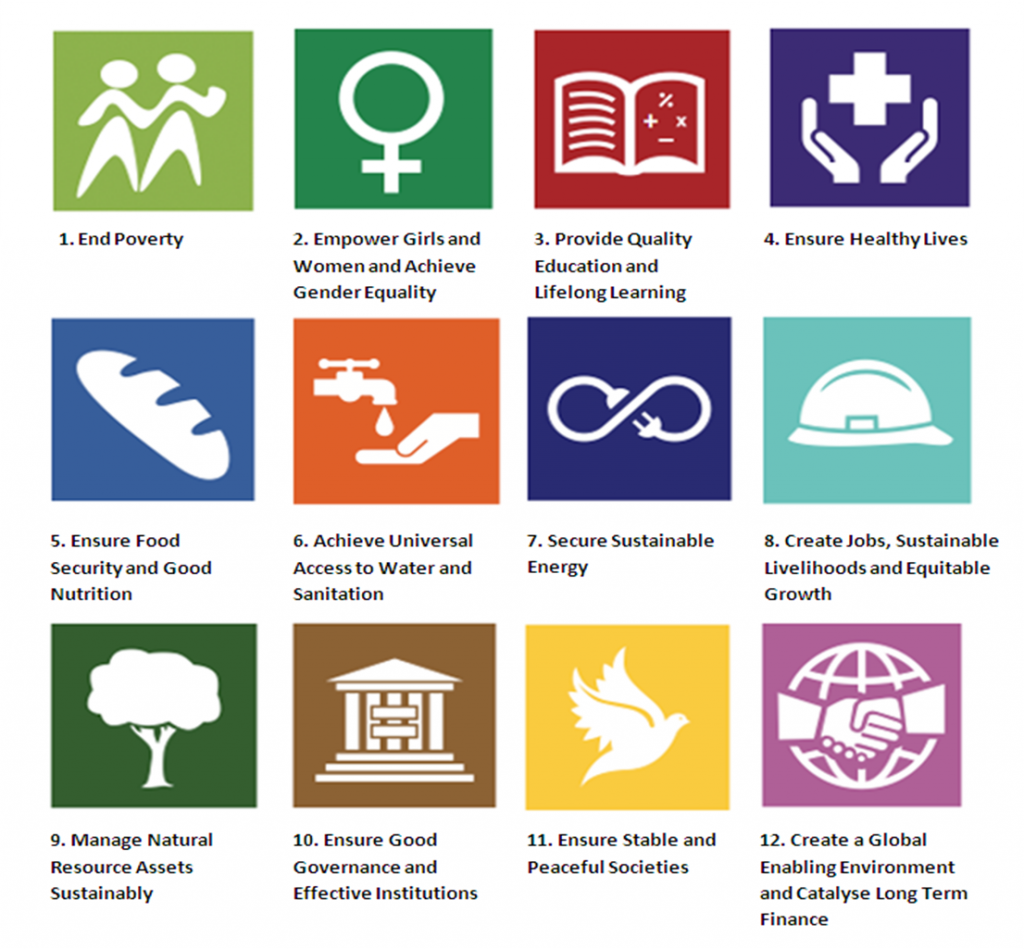Recently you would have heard a lot from Lattitude about the Millennium Development Goals (MDG’s). In summary, a blueprint for global cooperation on development, they have resulted in the fastest reduction in global poverty in the history of humankind. Over the last 13 years, to give but one example, extreme poverty has been more than halved.
This investment in the MDG’s looks to reap great rewards as for every £1 invested in combating the likes of chronic malnutrition and major diseases, the returns are between £20 and £30 in higher lifetime productivity.
As we determinably creep closer to the first benchmark of the MDG’s, 2015, the United Nations (UN) is now looking to build on the successes achieved and create new goals, to be achieved by the year 2030. The major 2 aims of these goals will be no less than to end extreme poverty (living on less than £1 per day), creating a minimal level of well-being for all, and ensure sustainable development; as ‘without ending poverty, we cannot build prosperity’.
The UN Secretary-General Ban Ki Moon recently set up a special panel to determine the nature of these future goals. The views of over 1 million people, from across the world and from all ranges of backgrounds, were accumulated through an ‘unprecedented global conversation’ on the future of human development. Importantly for Lattitude, half of those consulted were under the age of 30, recognising the importance of young people’s views and the integral part they will inevitably play in ensuring the continued development of humanity. Indeed, young people make up 25% of the world’s population and up to 75% in many developing countries, which are among the most dynamic societies and the current drivers of economic growth.
To help decide upon the focus for future goals, the special panel sought to look at the short-falls of the existing MDG’s, the clearest of which has been on ensuring environmentally sustainable development (MDG 7). Fossil fuels still make up 81% of global consumption, as they did in 2000 and recently an ominous threshold has been met as the levels of CO2 in the atmosphere have reached their highest in 800, 000 years. The effects of this, along with increased environmental degradation are that natural disasters, such as drought, storms and floods, are increasing in frequency and severity by an alarming rate, costing a total of $2.5tr since 2000 alone, and disproportionately affecting the worlds poorest.
The MDG’s also failed to take into account the devastating impact of conflict and violence on development, with 21 countries having experienced armed conflict since 2000, claiming around 7.9m lives. There has neither been much attention paid to inclusivity of growth, so that economies are diverse and maximise job opportunities for all members of society. Lastly, the importance of good governance was ignored, despite the fact that open and accountable governance is a fundamental building block for sustained development. Reflecting these shortfalls, the following 5 ‘transformative shifts’ were devised:
- Leave no one behind – provide social protection for the world poorest, to help people build resilience to life’s uncertainties;
- Sustainable development – here, developed countries have a special role to play fostering new technologies and being the fastest at reducing unsustainable consumption;
- Inclusive growth;
- Build peace and good governance;
- Forge a new global partnership – fostering a new spirit of solidarity, cooperation and mutual accountability based on a common understanding of our shared humanity and the mutual benefit of cooperation in a shrinking world.
Considering the MDG’s achievements and shortfalls, the special panel proposed, earlier this year, the following provisional global development goals for 2030:
While the world for many may seem more uncertain than in 2000, it is worth noting that the resources, knowledge and technology already exist to ensure the success of these goals; the need is only in our will power. Young people in this respect have been recognised as being key to bringing about the will power and momentum to drive development, particularly through social media platforms. The recent BYND 2015 Global Youth Summit confirmed this recognition, where Ban Ki Moon spoke of youth’s dynamism and endless enthusiasm for change.
If these 2030 development goals can be achieved, then it is likely that we could be the first generation to see the elimination of global hunger and major world diseases. Furthermore, more quantifiable achievements of these goals, if successfully met, would include:
1.2 billion fewer people hungry and in extreme poverty
100 million more children who would otherwise have died before they were five
4.4 million more women who would otherwise have died during pregnancy or childbirth
1.3 billion tons of food per year saved from going to waste
470 million more workers with good jobs and livelihoods
200 million more young people employed with the skills they need to get good work
1.2 billion more people connected to electricity
190 to 240 million hectares more of forest cover
$30 trillion spent by governments worldwide transparently accounted for
220 million fewer people who suffer crippling effects of natural disasters
Average global temperatures on a path to stabilise at less than 2° C above pre-industrial levels
For more information, including news, reports and videos on the post-2015 global development goals then please visit the UN MDG’s website.


